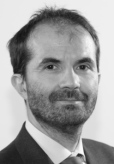Massimo Moraglio’s research career and professional records focus on mobility and its wide effects on political, social, and cultural fields, in particular investigating city infrastructure and transport technologies in contemporary urban environments. He received his MA in political sciences at the Turin University, and was awarded with a PhD in urban planning history in 2003 from the Politecnico di Torino. In the past, beyond the teaching and teaching assistance tasks, his training has been supported by grants and research for public and private institutions in Italy, France, and Germany. He was Marie Curie fellow at the Technische Universität Berlin.
RCC Research Project: Social Movement in the Car Century: Tramway Revival and the Hope for a New Urban
Environment, 1980–2010.
Film Interview with Massimo Moraglio
Selected Publications:
- "A Rough Modernisation: Landscapes and Highways in Italy in the 1900s." In The World Beyond the Windshield: Roads and Landscapes in the United States and Europe, edited by Christof Mauch and Thomas Zeller, 108–124. Athens, OH: Ohio University Press, 2008.
- "European Models, Domestic Hesitance: The Renewal of the Italian Road Network in the Inter-Bellum." Transfers: Interdisciplinary Journal of Mobility Studies 2 no. 1 (2012):87–105.
- Inventare gli spostamenti: Storia e immagini dell’autostrada Torino-Savona / Inventing Movement: History and Images of the A6 Motorway. Umberto Allemandi & C.: Torino-London-Venezia-New York, 2006. (co-authored with Michele Bonino).
- The Organization of Transport: A History of Users, Industry, and Public Policy. New York: Routledge, forthcoming. (co-edited with Christopher Kopper).
- "Transferring Technology, Shaping Society: Traffic Engineering in PIARC Agenda, in the Early 1930s." Technikgeschichte 80, no. 1 (2013):13–32


